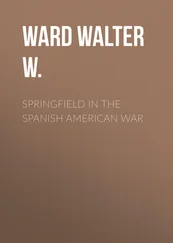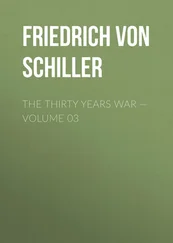Perry, meanwhile, kept at work. November 21 the Mississippi , bearing the red pennant of a vice commodore at the masthead, appeared at New Orleans.36 Announcing the capture of Tampico, Perry conferred with General Brooke and the governor of the state, and obtained sixteen cannon—half of them borrowed from the Louisiana arsenal—and with these, an engineer officer, 110 regular recruits and a quantity of ammunition, he arrived off Tampico on the twenty-ninth.37 Before long the Alabama regiment came from the Rio Grande, and the government, which heard of the capture of Tampico on November 28, ordered about 460 additional regulars to be sent from the United States. There was great anxiety at Washington to make the port secure, for, as will soon be discovered, a particular reason for holding it had now arisen. Gates issued stringent regulations to govern the citizens in case of a Mexican attack; and by December 19 Brigadier General Shields was in command there with an adequate and fairly well-protected garrison. Yet the Mexicans endeavored to feel cheerful. No battle had been lost, for none had been fought, said the government with convincing logic; and the Americans had not triumphed, for they had merely taken what had been abandoned; but the governor of Tamaulipas recalled bitterly that “in former times Tampico, almost by herself, had repulsed more than 4000 veterans.”38
Substantially all of northeastern Mexico was now in American hands, and the question of Taylor’s future operations, which had long been under consideration, became urgent. On that matter the General himself entertained a definite opinion. He was for adopting a boundary line that would include enough territory to pay all just American claims, and standing there on the defensive. As already drawn, the line ran from Parras, where he expected Wool to remain, and Patos, a rich hacienda on the Parras route about thirty-five miles from Saltillo, to Saltillo itself, to Camp Butler, six miles north of that city toward Rinconada Pass, and to Monterey. Between Monterey and Tampico lay a wide gap, but the General proposed to fill this now by occupying certain points in Tamaulipas. Victoria, the capital of that state, was exposed to attacks proceeding from Tula, and there he planned to have a large force.41
How many troops were available is not precisely known; but according to Meade, who seems to have been in rather close touch with headquarters, Worth was to have some 2500 at Saltillo and eight guns, Butler 1500 at Monterey, Taylor and Patterson about 5000, to be divided between the posts in Tamaulipas and a new position in advance of Saltillo, and the commanders on the lines of communication about 2000; which meant that some 14,500 men, including Wool’s 2400 or 2500 and about 1000 occupying Tampico, were to hold lines approximately 800 miles long in an enemy’s country.39 Over against them stood the Mexicans under Santa Anna, who in Taylor’s opinion were potentially, if not actually, more than 50,000 in number, and were occupying before Christmas a position only about sixty miles from the Americans;40 and in addition to these it was necessary to consider the large bands of irregulars, like those of Colonel Blanco, who were liable to gather suddenly almost anywhere.41
When Taylor reported his plan to the war department, a good deal of anxiety and perhaps distress was felt there. To be sure, he pointed out that artillery could be moved north by way of Saltillo only, and that water and provisions were scanty on that road, while doubtless he as well as others considered the Mexicans too deficient in vigor and enterprise to be feared. How just were these calculations will appear in the sequel, and they failed now to satisfy the government. Though not informed by Taylor precisely how many posts he intended to establish in Tamaulipas, Marcy was afraid that widely separated forces and lines of communication would be assailed, and it was clear that a small Mexican success, doing us no actual harm but diminishing our prestige materially, might rouse the people against us. Even the line to Monterey was long, the Secretary feared. Taylor evidently had no thorough knowledge of the passes, for he was now preparing to take a very hasty look at a few of them. Besides, it had been Marcy’s expectation of late that Wool’s column would be drawn back to Monterey; and at the end of the year, as well as earlier, he said he did not wish to occupy territory in advance of that city. Polk appealed in his diary to the General’s own opinion that he could not safely advance beyond it. Scott, as well as Marcy and the President, believed the troops were being scattered too much. Officers on the ground also held that view; but such was Taylor’s deliberate policy.41
Table of Contents
Not only Tamaulipas and Chihuahua but New Mexico lay within the scope of the government’s war policy, and certain features of the situation made the outlook in that quarter peculiarly inviting.
The province was cut into an eastern and a western section by the Rio Grande, which ran approximately north and south; and usage divided the best settled part of it into the Río Arriba (Upstream) district near Santa Fe, the capital, which lay some twenty miles east of the great river, and the Río Abajo (Downstream) district, which had for its metropolis Albuquerque, a small town on the Rio Grande about seventy-five miles to the southwest. According to a recent census the population was 100,000, of which the greater part belonged in the lower district; and more than half the wealth also was attributed to that section. The caravan trade, which made its way from Independence, 1Missouri, to Santa Fe, Chihuahua, Lagos and even Mexico City, gilded the name of the province, for it had advanced rapidly from the humble beginnings of 1821, and now employed 1200 men, involved a capital of some two millions, and usually paid a net profit of thirty or forty per cent on the goods transported. The favorable climate believed to prevail in New Mexico was an additional source of interest.2
The political situation appeared singularly promising. In March, 1845, the war department of Mexico admitted publicly that the northern sections of the country were “abandoned and more than abandoned” by the general government. Sensible Mexicans held that the connection of the province with their miserable system involved injury instead of benefit. The people received no protection against the ravages of the Indians. The national troops were a constant menace to the citizens. If a man desired to give his note for $3000, he was compelled to pay eight dollars for stamped paper. The duties and extortions levied upon the caravan merchants increased the price of their goods; and of late the central government had been trying to deprive the provincial authorities of money and the people of comforts by stopping that business entirely.2
The citizens appeared weary of oppression. They would not pay the taxes. It was found necessary in 1845 to excuse them from one of the most profitable but most annoying imposts. Indifference toward the general government—a natural return for its neglect and its vexations—prevailed, and the continual changes in that government aggravated the lack of patriotism. Indeed, there was more than indifference. A move to follow the example of Texas had been made in 1837, and the idea of joining the United States, which had existed in that year, became so strong by the early months of 1846 that representatives of the province in the national Congress openly avowed it. Finally, a revolution against misgovernment, that had recently occurred in the neighboring state of Sonora, appeared to offer a strong hint.2
All power, civil and military, lay in the hands of Manuel Armijo, governor and comandante general; and that of itself was an ample ground for insurrection. Born of disreputable parents, this precious adventurer had achieved a career still more disreputable. A man of unusual energy, though now a mountain of flesh, he could assume at will an air of ingenuous affability; could threaten, bluster, brag, intrigue or coax; and when dressed up in his blue frock coat, with blue striped pantaloons, shoulder straps, a red sash, and plenty of gold lace, could look—although at heart only a cunning and cowardly robber—quite impressive. His personal habits were said to be grossly immoral; his only principle was to succeed; and his type of mind, shrewd though low, was indicated by one of his favorite sayings, “It is better to be thought brave than to be so.” Such force, cleverness and lack of scruple had naturally made him rich. His family now owned Albuquerque and the neighboring estates. His position and close relations with the priests gave him a firm hold on the ecclesiastical arm; it was believed that an understanding with the savages enabled him to use them against his enemies; and he engaged rather deeply in the American trade. Yet his ambition was not yet satisfied; and he entertained the idea, it would seem, of making the province an independent country.2
Читать дальше












